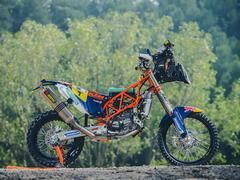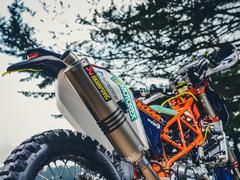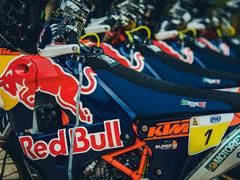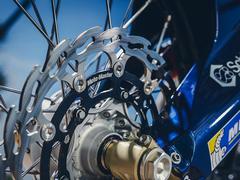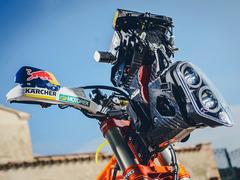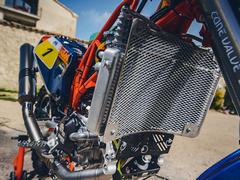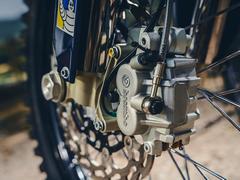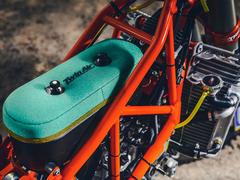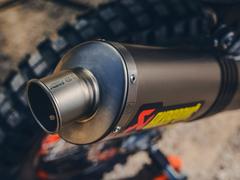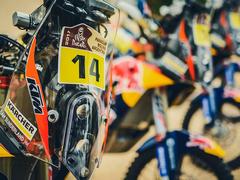Sam Sunderland's Dakar destroyer: PH2
We know what Britain's first Dakar winner went through, now here's the lowdown on his bike!
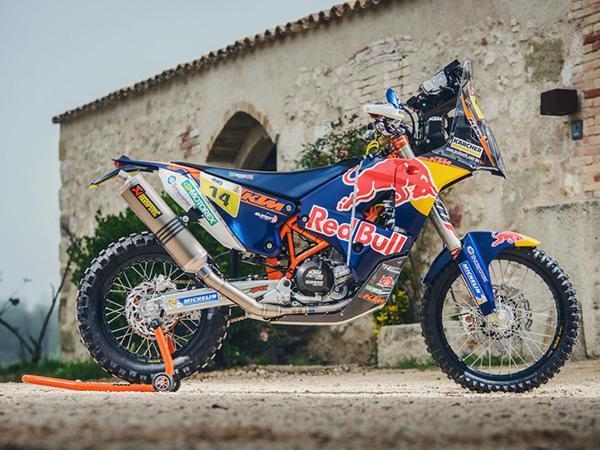
So what have we got?
"This is a KTM 450 Rally Factory, which is the Factory version of the 450 Rally model. You only get the Factory model if you ride for the KTM Factory team, but privateers can buy the slightly lower specification 450 Rally Replica for around £30,000 that will allow you to complete a Dakar."
How is it different to a traditional motocrosser?
"You have a carbon nav tower, which houses the road book and stuff like that, and has two trips, a cap-repeater which gives you a compass heading and a spare trip. There is also a GPS mount. Although we ride with a GPS it is generally closed but opens up when you get within a certain radius of a waypoint to guide you to the exact point."
What do the buttons on the bars do?
"There is a toggle switch to move the road book onwards and a button to recalibrate the trip if you have got lost and have ridden a few extra kilometers. There is also a switch to swap between front and back fuel tanks to help distribute the weight a bit, in general I drain the rear tank first as it stop the bike kicking around so aggressively on bumps. If I am in the sand, however, I will leave a bit of fuel in there to squat the rear down to gain traction. There is also a fuel map switch for slippery conditions that turns on a degree of traction control. It's nothing too flashy but cuts in when it sees the engine's revs spike, it's not wheel speed activated like you get in MotoGP."
How much fuel are you carrying?
"There are two eight-litre tanks either side of the bike and a 16-litre tank at the rear that doubles up as the subframe."
Are there any chassis changes?
"I run wider footpegs for comfort as you spend a lot of your day standing up and I also have my rear brake lever spaced up quite high as I ride on the rear of the bike quite a lot. When you ride in the sand you keep your weight as far back as possible, it's just a technique I have developed. The forks are 52mm inverted Factory WP forks, which are a bit wider than standard, and the damper is also a WP unit. The wheels are quite normal off-road sizes with a 21-inch front and 18-inch rear but the single front disc is a massive 300mm unit as sometimes you need to stop pretty quickly on the Dakar! We don't run inner tubes, we have off-road mousses to save flat tyres. We also have to carry two litres of water, but no one ever drinks it as it is pretty rancid!"
What is it powered by?
"The motor is a 449cc single cylinder with a SOHC, four valves and rocker arms. It makes roughly 68hp, which is a lot a as a motocrosser 450 makes between 60 and 64hp. The engine is fuel-injected and needs to be reliable - it has to complete a 10,000-kilometre Dakar as if you swap it, it costs you a 15-minute penalty, which can be crucial in the Dakar. It has an electric start and the rear wheel has a cush-drive to give the gearbox an easier time. It's all protected by carbon covers and the radiator has a cover over it to protect it from stones and also sticks. You can actually get a fire if sticks get wedged in the radiator!"
Is the bike comfortable to ride?
"I have really big foam grips to give my hands an easier time but the seat is very firm. It is actually better to have a firm seat rather than a comfortable one, which is a tactic bicycle riders also opt for. If you have a soft couch it is comfortable for a while but then it grabs and causes more friction, ultimately giving more pain. A firm seat is also easier to slide up and down on and we are moving about on the bike loads. The seat has a little slot in it where you put your time card ready to get it stamped."
What's it like to ride?
"It's built for racing, not comfort, and the suspension is rock hard but it is a nice bike to ride. And it's fully road legal! I rode it around London the other day, although if the police had seen us they may have had something to say about the noise of the titanium Akrapovic exhaust..."
KTM 450 RALLY FACTORY
Engine: Single-cylinder, 4V OHC, 449cc 4-stroke
Power (hp): 68@N/Arpm
Torque (lb ft): 39@7500rpm
Weight: 140kg (dry)
Seat height: 960mm
Gassing Station | Biker Banter | Top of Page | What's New | My Stuff

